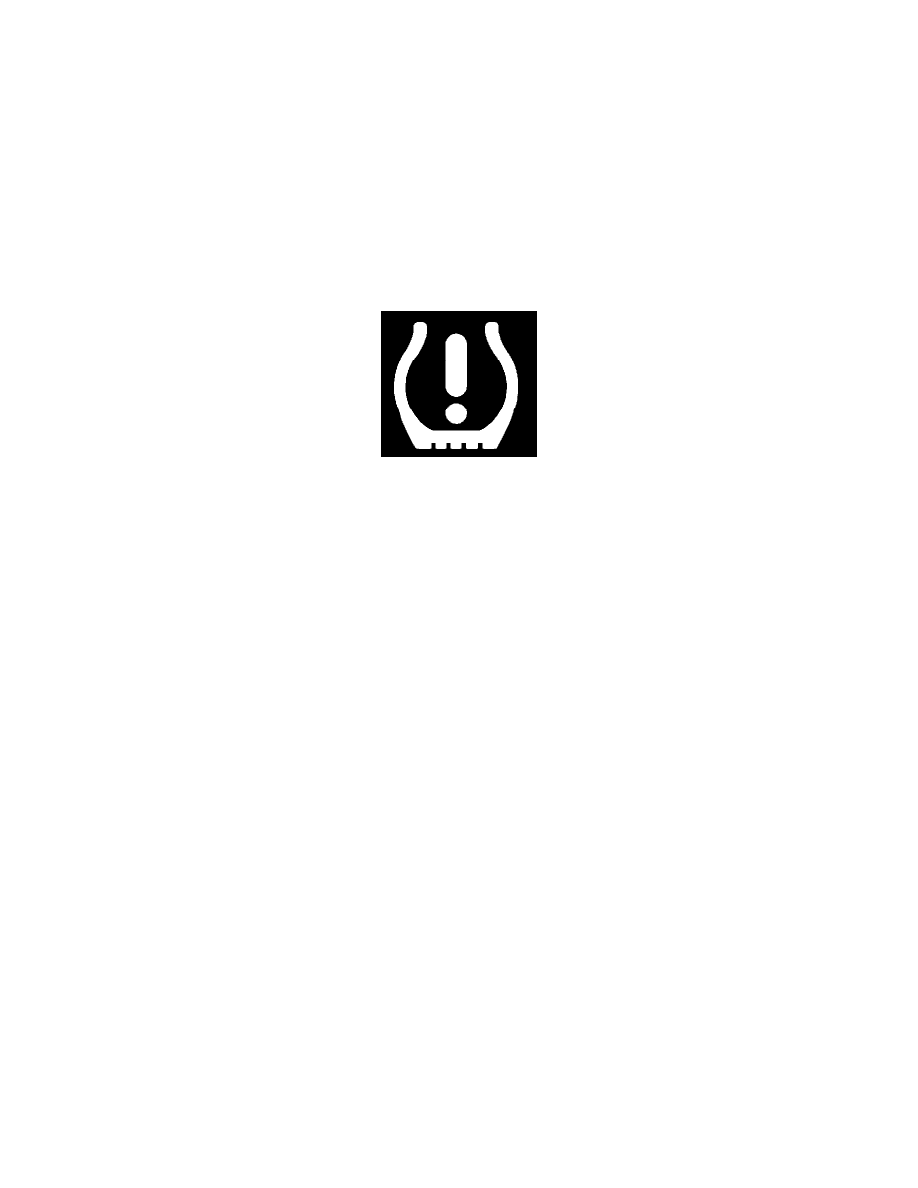XLR V8-4.6L VIN A (2006)

Low Tire Pressure Indicator: Description and Operation
TIRE PRESSURE MONITOR SYSTEM
The Tire Pressure Monitor System (TPMS) on your vehicle, uses radio and sensor technology to check tire pressure levels. Sensors, mounted on each
tire and wheel assembly transmit tire pressure readings to a receiver located in the vehicle. The TPMS sensors transmit tire pressure readings once
every 60 seconds while the vehicle is being driven and once every 60 minutes when the vehicle is stationary for more than 15 minutes. Using the
Driver Information Center (DIC), tire pressure levels can be viewed by the driver. The TPMS also uses the DIC to warn the driver when air pressure,
in one or more tires, falls below 25 psi (172 kPa) or is above 42 psi (290 kPa).
A low tire pressure warning light also appears on the instrument panel cluster when a low tire condition exists. The DIC message, "CHECK TIRE
PRESSURE" and the low tire pressure warning light will be shown each time the engine is started and stays on until the low tire condition is corrected.
Each tire, including the spare (if provided), should be checked monthly when cold and inflated to the inflation pressure recommended by the vehicle
manufacturer on the vehicle placard or tire inflation pressure label. (If your vehicle has tires of a different size than the size indicated on the vehicle
placard or tire inflation pressure label, you should determine the proper tire inflation pressure for those tires.)
As an added safety feature, your vehicle has been equipped with a tire pressure monitoring system (TPMS) that illuminates a low tire pressure telltale
when one or more of your tires is significantly under-inflated.
Accordingly, when the low tire pressure telltale illuminates, you should stop and check your tires as soon as possible, and inflate them to the proper
pressure. Driving on a significantly under-inflated tire causes the tire to overheat and can lead to tire failure. Under-inflation also reduces fuel
efficiency and tire tread life, and may affect the vehicle's handling and stopping ability.
Please note that the TPMS is not a substitute for proper tire maintenance, and it is the driver's responsibility to maintain correct tire pressure, even if
under-inflation has not reached the level to trigger illumination of the TPMS low tire pressure telltale.
The Tire and Loading Information Label (tire information placard) is attached to the vehicle's b-pillar. This label shows the size of your vehicle's
original tires and the correct inflation pressure for your vehicle's tires when they are cold.
Your vehicle's TPMS can alert you about a low or high tire pressure condition but it does not replace normal tire maintenance.
The SVC (Service) "TIRE MONITOR" message is displayed when the TPM system is malfunctioning. For example, one or more TPM sensors may
be inoperable or missing. See your dealer for service.
TPMS SENSOR IDENTIFICATION CODES
Each TPMS sensor has a unique identification code. Any time you replace one or more of the TPMS sensors or rotate the vehicle's tires, the
identification codes will need to be matched to the new tire/wheel position. The sensors are matched, to the tire/wheel positions, in the following
order: driver's side front tire, passenger's side front tire, passenger's side rear tire, and driver's side rear tire using a TPMS diagnostic tool.
